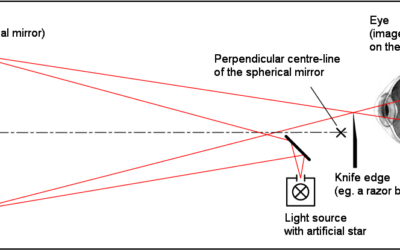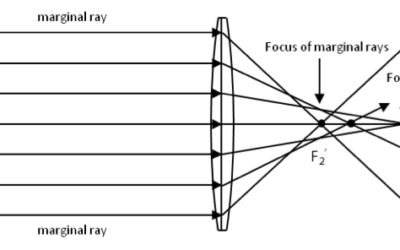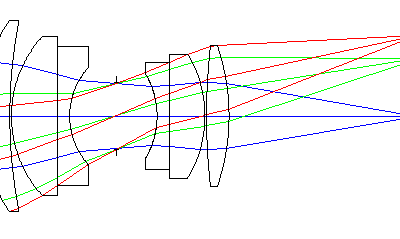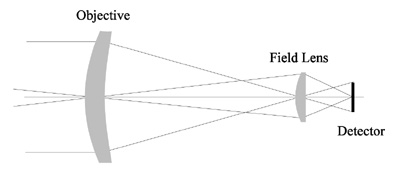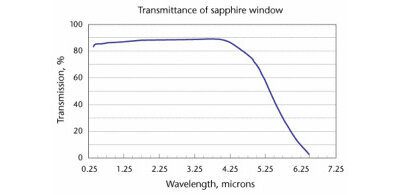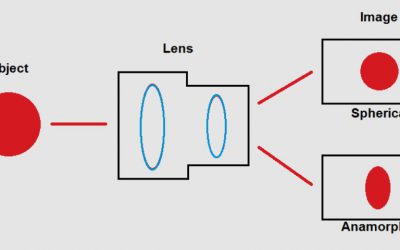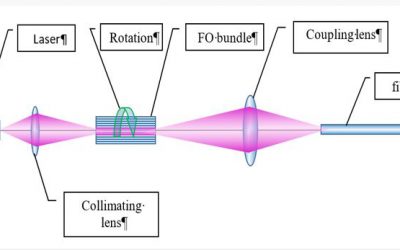The Foucault Test or ‘knife edge test’ and how they are used in optical metrology is explained
Uncategorized
Optical design using liquid lenses
by Victor Argueta | imaging, lens design, lens design consulting, machine vision, Optical Components, Uncategorized
Liquid lenses, are a type of optical lens that have a tunable focal length by shaping a liquid electronically. These lenses can be based on voice coil actuation, or based on electrowetting technology, which involves manipulating the surface tension of a conductive...
Understanding Paraxial Lenses
by Victor Argueta | lens design, optical design, Uncategorized
Paraxial Lenses Paraxial lenses are a simplified model used to analyze and design optical systems, particularly lenses. In the paraxial approximation, light rays passing through a lens are assumed to be close to the optical axis and at small angles with respect...
Screen Scratch Detection System
by John | Uncategorized
The resale value of a used smartphone is highly dependent on the quality of the screen. In this project, we demonstrate methods to automatically identify screen scratches and determine screen quality using a custom imaging and illumination layout and computer...
5 Tricks to Control Stray Light
by Victor Argueta | Uncategorized
Stray light is a major limiting factor in many imaging systems. When stray light enters the system, it degrades the signal-to-noise ratio or contrast ratio, making it more difficult to obtain accurate images. There are many ways to prevent stray light in an optical system. In this article we will review five.
3 Keys To Quality Double Gaussian Lens Design
by Victor Argueta | FAQ, lens design, lens design consulting, Uncategorized
One of the most common lens system designs- especially in photography- is what is called a Double Gaussian lens. There are several different configurations, and close to 90 different patents have been filed from 1936 – 2010. One of the reasons this lens design configuration is so popular is that it corrects many of the major image aberrations with a relatively low number of optical elements.
Laser Beam Caustic: Explained
by Victor Argueta | FAQ, illumination, optics definitions, Uncategorized
One parameter that can be used to evaluate the quality of a laser beam is what's called a Beam Caustic. A caustic, in general, is an “envelope” that defines the extent of a beam of light after they have been refracted (or reflected ) by a curved surface. As the...
3 Strategies for Field Lens Development and Design
by Victor Argueta | imaging, lens design, Uncategorized
Field lenses are a basic element in optical design, to understand their role in an optical system it’s important first to understand the definitions of Field-of-View (FOV). Generally speaking, FOV is the maximum size of an object that an optical system can create an...
Bidirectional Scattering Distribution Function
by John | Uncategorized
As optical engineers, we are in charge of more than just the design and implementation of optical systems for specific applications: we often need to evaluate optical systems’ performance or to assess the quality of optical components. To do these assessments, we...
Uses of Sapphire explained; IR optics, laser optics, windows
by Victor Argueta | optics, science, Uncategorized
IntroductionYou may not be aware but you probably have in your hands one of the toughest substances in the world right now. If you own a good quality watch chances are that it has a sapphire glass. Also, some versions of Appla watches and almost all mobile phones use...
Anamorphic lenses
by OlegRybakovsky | Uncategorized
There are two lens classes that can be used in film making - spherical and anamorphic. Spherical lenses are more common and have wider applications. A rectangular film gate or imaging sensor area acts as the field stop determining both the field of view (FOV) angular...
Simple system for laser speckle reduction
by John | Uncategorized
As the use of lasers grows in application areas such as 3D depth mapping and laser cinema, a fundamental property of lasers called laser speckle has taken on greater importance. Many companies have launched to commercialize new approaches for reducing speckle noise....
Making LIDAR cheaper
by John | Uncategorized
LiDAR is an essential enabling tech for dozens of robot applications. To build them, 3D maps sensors are used to collect pulsed light reflected off a target. The return time and wavelength changes allow 3D object imaging. To date, LiDAR’s prohibitive costs and...
Innovators in robotics
by John | Uncategorized
Here is a quick sampling of local innovative robotics and tech companies that have us woo-hooing. Need help? Click here to learn more about our custom optical engineering services. For those of you bent on bending a spoon with your mind, you might...
In the eyes of the beholder: strides in computer intelligence
by John | Uncategorized
Computer vision modeling has relied on using images broken down into various shapes and colors. This however fails to correctly identify familiar objects when in variations of the model. Say a curled up cat or a dog with a Santa hat.In her 2015 TED talk,...
10 suppliers of off-the-shelf lenses
by John | Uncategorized
In certain projects, the best lens design choice is not to design. While high volume production costs savings for a custom design are considerable, there are times when delivery time requirements don't permit the use of a custom design, or when an existing lens used...
Build your own portable polariscope
by John | Uncategorized
We built our own device to look for polarization in materials. Below we explain how to make your own. Find the leads that power the screen backlight. Solder an old USB cable to the leads. 3-5 volts are required Cut the polarizer off an old cell phone, laptop or LCD...
Distinctive design features of infrared optical systems
by SergeySidorovich | Uncategorized
A designer of an IR optical system needs to account for key specifications that greatly impact the complexity of the device construction and its production cost. The most important requirements are described below. The maximum achievable theoretical resolution in...
The future of mobile optics, Apple patent filings
by SergeySidorovich | Uncategorized
In recent years, a key differentiator among the competing smart phone manufacturers has been their cameras. A quick look at the marketing for the Apple iphone, Samsung Galaxy, LG, Nokia, and HTC smart phones demonstrates how important outstanding camera performance...
Holidays wouldn’t be the same without optics
by John | Uncategorized
More optics links we hope you will like… Today’s batch: OFH’s optics for the holidays: The atmospheric causes of winter halos: Explained by the always-excellent “Atmospheric Optics” site. Bokode: You’ve seen “bokeh” blur, distant out of focus points of light in...
